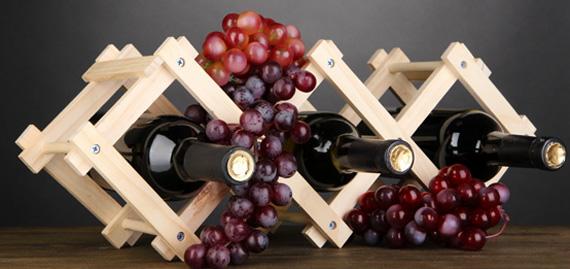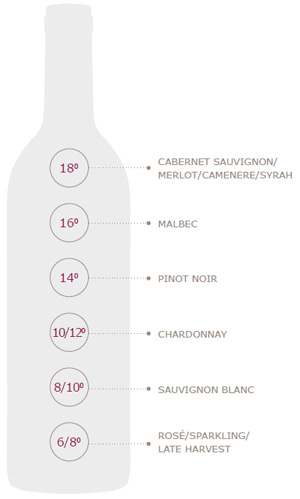Practical Tips
Wine temperatures

When it comes to serving temperature, a wine should be just right. Too hot and the wine’s alcohol will be emphasised, leaving it flat and flabby. Too cold and the aromas and flavours will be muted and, for reds, the tannins may seem harsh and astringent. Too often, white wines are served straight out of a fridge while reds are opened at a toasty room temperature, neither of which is ideal. What is ‘just right’ for you is a matter of individual taste, but here are some general guidelines:
- Light dry white wines, rosés, sparkling wines: Serve at 5–10°C to preserve their freshness and fruitiness. Think about a crisp Pinot Grigio and Champagne. For sparklers, chilling keeps bubbles fine rather than frothy. This is also a good range for white dessert wines. Sweetness is accentuated at warmer temperatures, so chilling them preserves their balance without quashing their vibrant aromas.
- Full-bodied white wines and light, fruity reds: Serve at 10–16°C to pick up more of the complexity and aromatics of a rich Chardonnay or to make a fruity Beaujolais more refreshing.
- Full-bodied red wines and ports: Serve at 16–18°C, cooler than most room temperatures and warmer than ideal cellaring temperatures to make the tannins in powerful Cabernet or Syrah feel more supple and de-emphasise bitter components.
Be prepared
If your wines have been sitting out at room temperature, it can take an hour or two in a fridge to chill a white or bubbly down to the right temperature, and there is no harm in sticking a too-warm red in there for a little while too. On the other hand, a red pulled from a cellar, cooler or fridge may need up to a half-hour sitting out at room temperature. If you can afford it, it is handy to have a small wine cooler with temperature settings up to 18°C; you can use that to hold bottles you want to open for dinner or a party.
Barring that, how do you know if the wine has reached serving temperature? Instant digital thermometers can take a wine’s temperature through the bottle, and there are other models you can stick in the mouth of an open bottle. But it is easy enough to touch the bottle and guess; it should at least be cool to the touch. After enough trial and error from opening and tasting, you will learn what feels ‘right’.
Need a quick fix?
If the wine is too warm, immerse it in a mix of ice and cold water – this chills a bottle more quickly than ice alone because more of the glass is in contact with the cold source. It may take about 10 minutes for a red to 30 minutes for Champagne. You can even stick a bottle in the freezer for 15 minutes. (Do not forget it though or it may freeze and push the cork out!)
If the wine is too cold, decant it into a container rinsed in hot water or immerse it briefly in a bucket of warm water—but don’t try anything with high heat. If the wine is only a little cold, just pour it into glasses and cup your hands around the bowl to warm it up.
Keep in mind that a wine served cool will warm up in the glass, while a wine served warm will only get warmer. It is always better to start out a little lower than the target temperature.

Wine serving temperatures :
White Wines: 7–100C
Red Wines: 10–180C
Rosé Wines: 7–130C
Sparkling Wines: 6–110C
Fortified Wines: 13–200C




